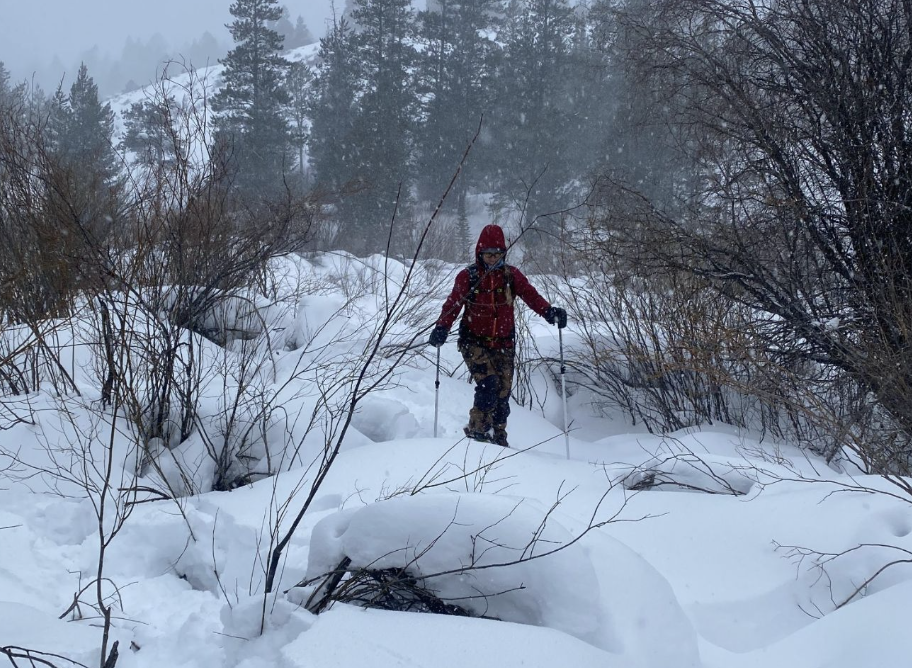Tree Wells and Snow Bridges: Understanding the Dangers and Safety Precautions
Tree Wells
Tree wells are a serious potential hazard in snowy, forested areas, particularly for skiers and snowboarders off-piste. A tree well is a void or depression that forms around the base of a tree, typically under its branches. These wells occur because snow accumulates around the trunk but does not settle as densely beneath the tree's branches, leaving a concealed and potentially dangerous space.
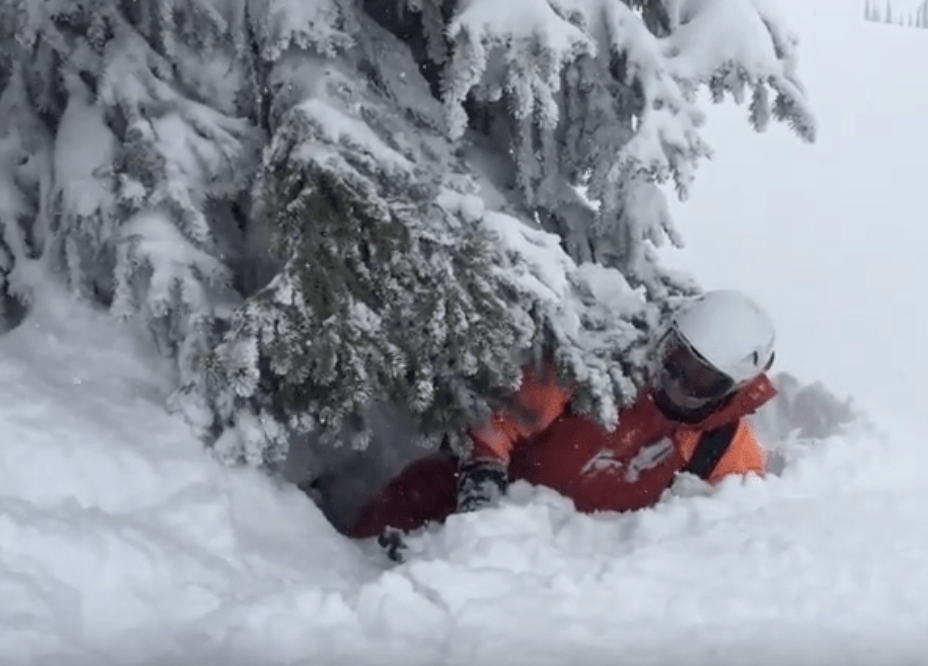
Dangers of Tree Wells
Tree wells can be difficult to detect, posing significant risks to winter sports enthusiasts:
Deep Snow Accumulation: The loose, unconsolidated snow in tree wells can quickly engulf an individual who falls in, making self-extraction challenging.
Entrapment: Struggling to escape often results in sinking deeper into the well, leading to further entrapment.
Suffocation Risk: Loose snow around tree wells can block airways, increasing the risk of suffocation if help does not arrive promptly.
Limited Visibility: In dense, snowy conditions, tree wells can be hard to spot, increasing the likelihood of an accident.
Preventative Measures
To reduce the risks associated with tree wells, consider the following precautions:
Ride with a Partner: Always snowboard or ski with a buddy and always maintain visual contact.
Avoid Tree Bases: Maintain a safe distance from trees, particularly in deep snow conditions.
Educate Yourself: Learn about tree well dangers and the proper response techniques in case of an accident.
Use Safety Gear: Equip yourself with helmets and avalanche safety equipment, such as a beacon, probe, and shovel.
Stay Alert: Regularly assess the terrain and watch for signs of tree wells, especially in unfamiliar areas.
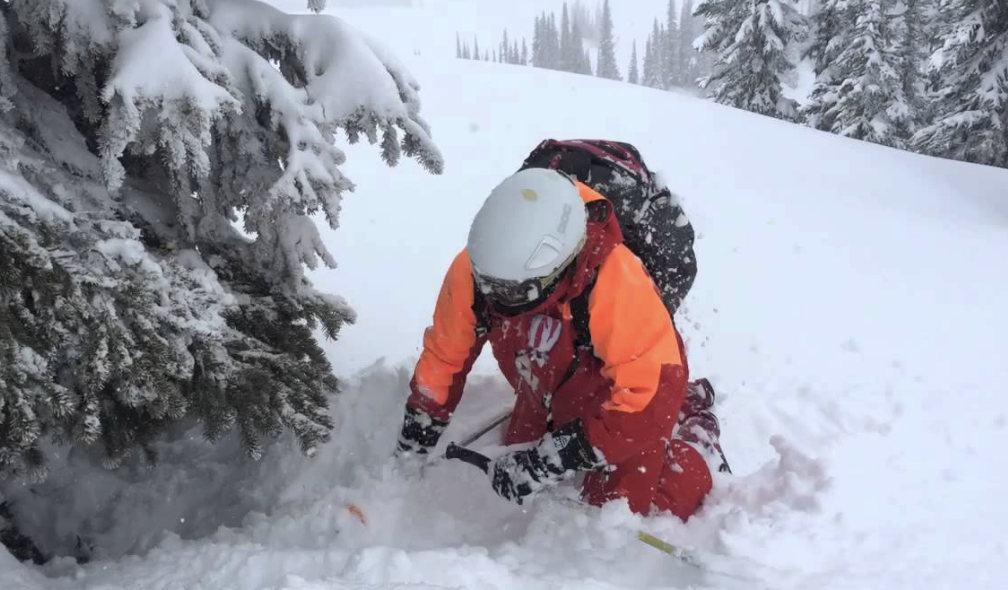
Escaping a Tree Well
If you find yourself trapped in a tree well, follow these steps to increase your chances of survival:
Stay Calm: Conserve energy and avoid panicking, which can worsen the situation.
Create an Air Pocket: Use your arms to form an air space around your face to prevent suffocation.
Wiggle and Roll: Try to move slowly and deliberately to create a larger void and gain mobility.
Attempt to Stand: Use your snowboard or skis for leverage to push yourself up if possible.
Signal for Help: Shout, use a whistle, or activate an emergency beacon to alert your companions.
Wait for Assistance: If self-rescue is not an option, remain calm and wait for help.
Snow Bridges
A snow bridge is an arch or tunnel-like formation that occurs when snow accumulates over a stream, crevasse, or other gaps in the terrain. These structures are common in mountainous or alpine regions where snow can build up rapidly, forming a deceptive and fragile covering.
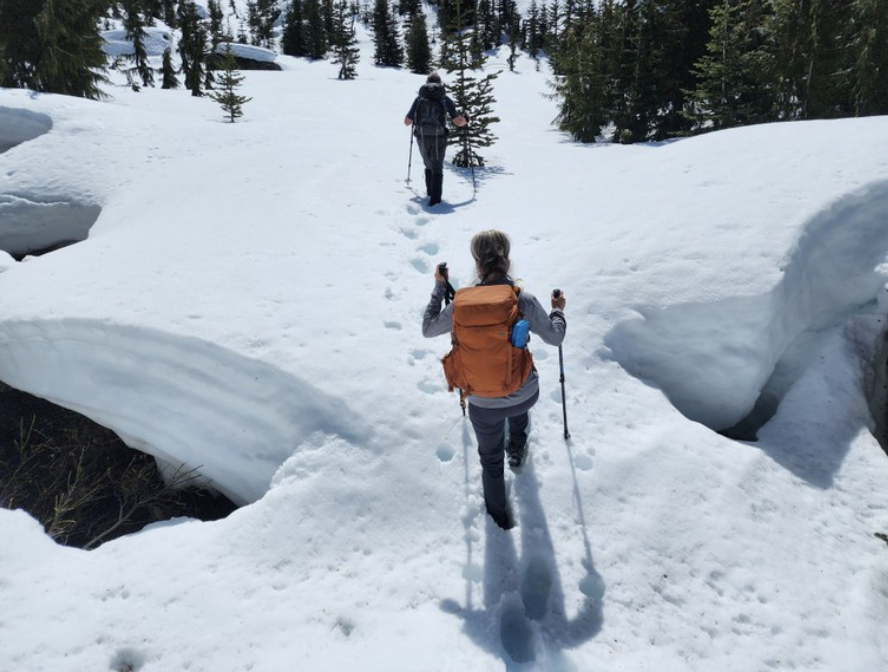
Dangers of Snow Bridges
Snow bridges can be hazardous due to their unpredictable stability and the potential for collapse:
Hidden Gaps: Snow bridges can conceal streams, crevasses, or deep voids underneath, leading to unexpected falls.
Weakening Over Time: Temperature fluctuations, melting, and refreezing can weaken the structural integrity of snow bridges.
Weight Sensitivity: Snow bridges may not support the weight of a person, especially if they are thin or deteriorating.
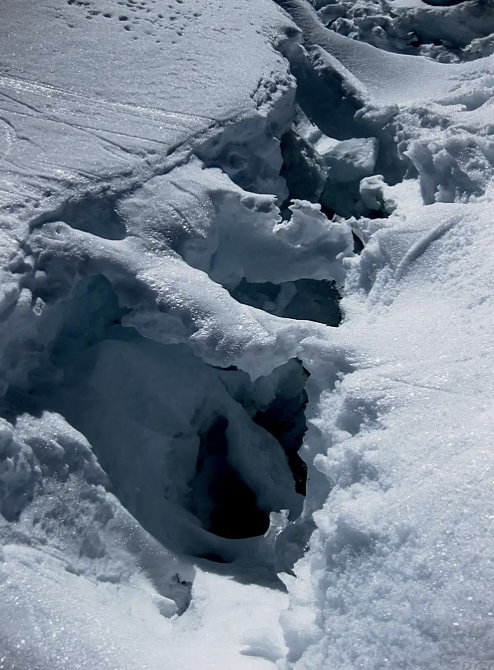
Precautionary Measures
To minimize risks associated with snow bridges, follow these safety guidelines:
Assess Stability: Before crossing, carefully examine the snow bridge for signs of weakness, such as visible cracks or sagging.
Avoid Crossing Alone: If possible, travel with a group and use a rope for added safety.
Test with Poles: Use ski poles to probe the snow bridge and gauge its depth and firmness.
Stay on Established Routes: Follow marked trails where snow bridges have been assessed for safety.
Monitor Weather Conditions: Be aware of temperature changes that could impact the strength of snow bridges.
Stay informed, exercise caution, and use the right equipment to safely navigate winter environments while minimizing the risks.
